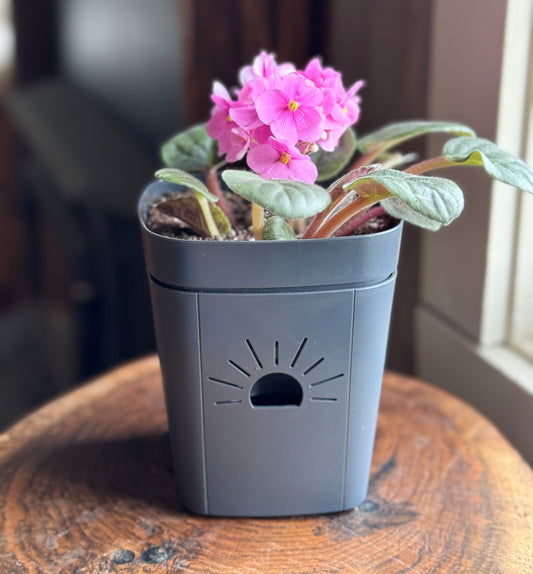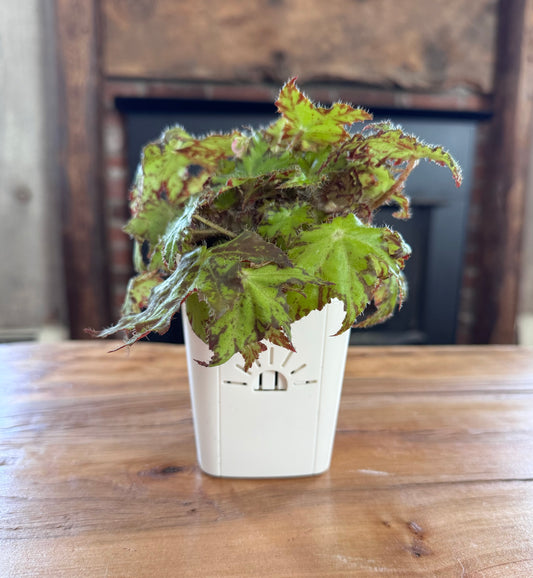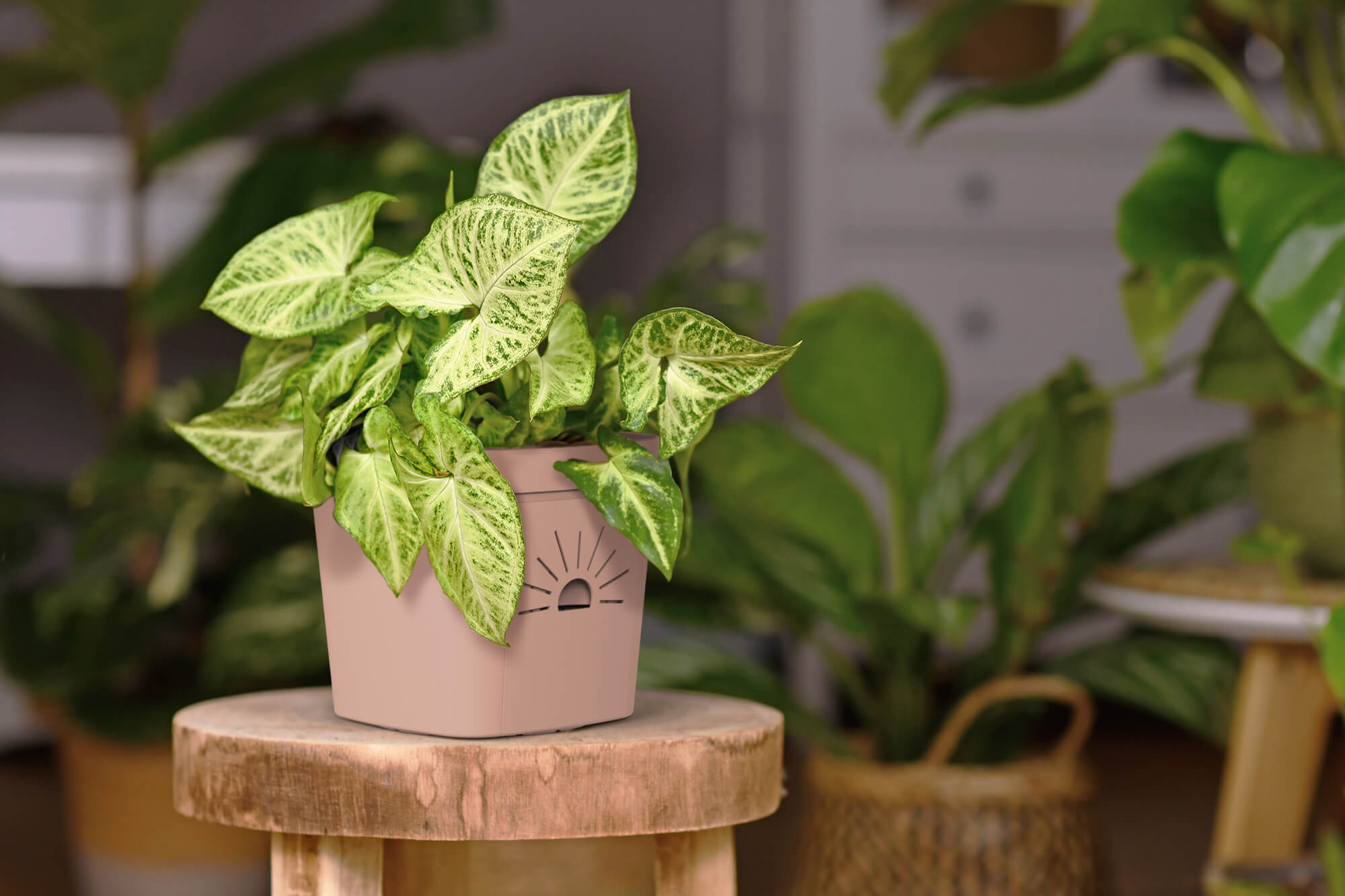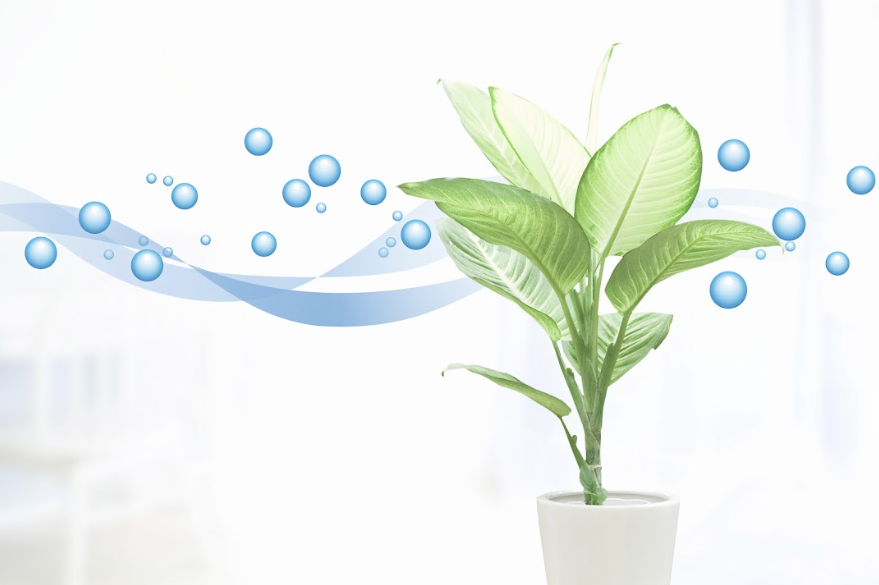Origins
Spathiphyllum is a genus of plants containing 47 different species. The common name for the plant is Peace Lily or Spath plant. These plants are of a perennial type, and their leaves can be between 5-25 inches long and 1-10 inches wide. The flowers are presented in a spadix, accompanied by a white, yellow, or green spathe that can be up to one foot long.
Peace lilies are extremely popular as houseplants, but many people don’t realize that they’re not true lilies at all. They actually belong to the Arum family and originate in Central and South America and Asia, where they grow on the forest floor under dappled sunlight. This means that replicating their natural environment is essential for keeping them healthy. The plant’s unique flower structure is also responsible for its Latin name, Spathiphyllum — “spathe-leaf”— which refers to the white sheath-like leaf (known as a spathe) surrounding the spike of small flowers (the spadix).
Peace lilies, native to tropical regions, require bright but indirect light in order to thrive. If subjected to too little or too much light, their leaves may become discolored or wilted. In ideal conditions with enough light, peace lilies produce white to off-white flowers starting in the early summer months and continuing throughout the year. Most household varieties of peace lily grow up to 36 inches tall, while larger outdoor cultivars can have stems that reach up to 6 feet in height. It’s important to note that peace lilies are not cold-hardy plants, so they should only be grown outdoors in warm, humid climates such as USDA Zones 10 and 11.
Genus Summary
| GENUS | Spathiphyllum |
| COMMON NAMES | Peace lily, Spath plant. |
| LIGHT | Bright, indirect light |
| WATER SCHEDULE | Naked Root = 14 days |
| WATER REQUIREMENTS | Conventional Planter = evenly moist, but not soggy. |
| HUMIDITY | High |
| TEMPERATURE | 65-75°F |
| FEEDING | 1x month |
| TOXICITY | Mildly toxic to humans and animals |
| PESTS | Scale insects, mealybugs |
| DISEASES | Root rot from overwatering and improper aeration |
| POT | Maximum root zone aeration is essential |
| SOIL | 1 Part soil, 1 part perlite, 1 part bark |
| FERTILIZER | Balanced fertilizer every 1.5 months |
| PROPAGATION | By division |
| PRUNING | Only to remove dead leaves or flowers |
| SIZE | 12 inches to six feet |
Light Requirements
Peace lilies need to be placed in a location that receives indirect but bright sunlight. An east-facing window is ideal – the plant will receive morning sun, which is not too harsh and can help them thrive. North-facing windows are also suitable for growing peace lilies as they’ll get some brighter light throughout the morning. However, it’s important to keep peace lilies away from areas with direct sunlight all day long (such as south-facing windows) since this may cause their soil to become overly dry and harm their health.
Spathiphyllum is a very tolerant plant when it comes to low light conditions. But it still needs some light and will not flower if placed in complete darkness. To ensure that your Spathiphyllum produces beautiful flowers, make sure to move it to a brighter location with indirect sunlight for at least several hours each day. This can be achieved by placing the plant near an east-facing window or in another spot where there is plenty of bright but indirect light. If you’re having trouble finding such an area in your home, consider using artificial lighting like LED bulbs or fluorescent lights, which should do the job just fine!
Water Requirements
If using a Naked Root planter pot, you can follow a 14-day watering schedule for Spathiphyllum plants.
If you are using a conventional planter pot, check the soil regularly and water when the top few inches feel dry. The amount of water will depend on factors such as light exposure and room temperature, so you may need to adjust your watering habits according to those conditions in order for your plant to thrive. Additionally, increasing the humidity around your plant can help prevent brown tips from appearing on its leaves due to a lack of moisture.
Peace lilies are great houseplants for people who don’t have a lot of time to care for plants. They’re very communicative and will let you know when they’re thirsty simply by drooping their leaves. To check if your peace lily needs water, stick your finger into the soil to test the moisture level. If it is dry, then it’s time to give it some water! Be sure not to overwater, though, as this can cause root rot in Spathiphyllum plants. When watering, make sure that the entire potting mix is evenly moistened but not saturated with water.
Peace lilies are sensitive to chemicals commonly found in tap water, such as fluoride, chlorine, and other heavy metals, which may lead to brown leaf tips. To avoid this, it is best practice to use filtered room-temperature water when watering your peace lily. If you must use regular tap water, let the water sit for 24 hours before using it on your plant so the chemicals have time to evaporate out of the water.
Humidity
Peace lilies are known to thrive in high-humidity environments. To help increase the humidity around your peace lily, misting their leaves can be an effective option. You can also try placing their pot atop a moistened tray of gravel. Additionally, grouping several plants together is another great way to keep humidity levels higher for each individual plant in the group. The most efficient solution would be using a humidifier which will ensure your Spathiphyllum stays healthy and happy over time!
Temperature
Peace lilies are tropical plants, so they prefer warmer temperatures. During the day, it is best to keep the temperature between 65°F and 75°F. At night, you should lower the temperature by about 10 degrees in order to replicate their natural environment. It is important not to place peace lilies near a furnace or drafty windows or doors, as they are not a big fan of cold breezes. Additionally, make sure that any air vents are not too close to your plant since this could drastically reduce humidity.
Toxicity
The peace lily is a beautiful and popular houseplant, but it’s important to remember that all parts of the plant contain calcium oxalate, a mildly toxic substance. Ingesting large amounts can cause stomach and respiratory irritation in humans and pets alike. Therefore, it’s best to keep peace lilies out of reach of small children or inquisitive pets who might chew on the leaves or stems. If ingested in small amounts by accident, seek medical attention immediately. To be safe, avoid growing this plant if you have young children or curious animals in your home.
Pests and Diseases
Scale and mealybugs can be a nuisance to Spathiphyllum plants if left unchecked. These pests feed on the plant’s sap, which can lead to the discoloration of leaves or stunted growth. To prevent infestations, it is important to inspect your Spathiphyllum regularly for signs of these bugs, such as white cottony masses or small brownish bumps. If any are found, they should be removed immediately before they have a chance to spread further. A thorough wipe-down of the leaves with either a dish soap and water solution or insecticidal soap is an effective way of eliminating them. However, repeated applications may be necessary depending on the severity of the infestation. Additionally, keeping the area around your plant free from debris will help reduce any potential pest problems in the future.
Root rot is a common problem when it comes to Spathiphyllum plants. If you find that the leaves are wilting and the soil is still moist, then your plant likely has root rot. To avoid this issue, water only until moisture comes out of the drainage holes, and never leave any water in the saucer. Additionally, make sure to use pots with aeration around the root ball as it increases oxygen levels which prevent fungi from forming. This will help ensure that your Spathiphyllum stays healthy and vibrant for many years to come.
Pot
As mentioned above, a pot with aeration holes in the root zone area is ideal for Spathiphyllum plants. They have roots that rot easily, and they also like consistent moisture. This is a recipe for root rot. To avoid rot, use an air root pruning type of container or an unglazed terracotta pot.
Soil
Peace lily plants prefer a soil mixture that is full of organic matter and has excellent drainage. This mirrors their natural environment in the tropics, where the soil contains decaying organic matter. To avoid soil that is too wet, a draining blend should be used, and a pot with aeration is ideal for managing any extra moisture and providing air circulation
In addition to having well-draining soil, it is important that the potting mix be nutrient-rich in order to ensure your Peace Lily is healthy and thriving. The ideal mix should contain around 20 to 30% inorganic matter, such as perlite or bark, which helps aerate the soil and keeps roots from becoming waterlogged.
If you decide to create your own potting mix for your Peace Lily plant at home, consider a ratio of 3 parts potting soil with 1 part each of perlite and bark. This combination creates larger particles known as macro pores, which help oxygen circulate through the soil, reducing the risk of root rot. With this mixture, your Peace Lily will have an excellent growing environment!
Fertilizer
Peace lilies should be fertilized only occasionally to ensure healthy growth. During the spring and summer months, a balanced houseplant fertilizer should be used every six weeks starting in late winter.
If you notice green flowers or weak-looking flowers, this could indicate an overabundance of nitrogen in the plant from too much fertilizing. In this case, reduce your fertilization rate and switch to a fertilizer made specifically for flowering plants that contain more phosphorous, which helps promote blooming. Additionally, if there is a general lack of flowers, then switching to a flower-specific fertilizer can help encourage bloom production as well.
Propagation
When propagating the peace lily, it is important to choose a time when the plant is healthy and strong. In general, this can be done in any season with care. The peace lily grows in bunches from its root system, with leaves emerging directly out of the soil. When repotting, try identifying several of these bunches that appear large enough to support their own roots and separate them into two distinct plants using caution not to damage any existing roots on either cluster. Once separated, pot both of these new plants in their own containers filled with fresh potting mix that will provide good drainage for each individual plant.
Pruning
The only real pruning needed is removing spent blossoms and leaves. Pruning your peace lily can help keep it looking its best. Prune away any brown or yellowing leaves as soon as you notice them. This will keep the plant healthy and looking attractive. If a stem is dead or dying, cut it off at the base of the plant.
You should also regularly clean the large, shiny leaves of your peace lily with a wet paper towel. Dust can accumulate quickly on these surfaces and impede photosynthesis – wiping them down keeps your plant healthy and happy! For added shine, use a soft cloth dampened with warm water after cleaning with a wet paper towel.
10 Striking Varieties and Cultivars
All varieties of Spathiphyllum look very similar to each other, and they are all beautiful. Here are a few of our favorites!
Wallisii Peace Lily – Spathiphyllum wallisii – The Wallisii Peace Lily, named after Gustav Wallis of William Bull nursery in Chelsea, is an exotic herbaceous plant. Its leaves are lance-shaped and dark green, becoming glossy or shiny as the plant matures. The glossy leaves typically measure 14 to 16 inches long and 3 to 4 inches wide. The spathe-flower of the wallisii Peace Lily ranges from 2.75 to 6.75 inches long. Overall this variety is a dwarf plant that only reaches 20 inches tall and is great for small spaces or tabletops.
Sensation Peace Lily – Spathiphyllum ‘Sensation’ – The Sensation Peace Lily is an evergreen plant with large, dark green, broad-elliptical leaves that can form in layers. This variety of Peace Lily is similar to some true lily plants, featuring a white flower that can reach up to 4 inches wide when it blooms on a 20 inches long stem after reaching maturity. This type of Peace Lily can grow up to 3.5 feet tall when mature, making it one of the larger varieties of Peace Lily available!
Peace Lily Petite – Spathiphyllum ‘Petite’ – Spathiphyllum ‘Petite,’ which originated in Southeast Asia, is a dwarf variety that grows to be about 18 inches tall. It is identifiable by its glossy dark green leaves with a pointed tip and the white color of both its spathe and spadix. Its attractive, shiny leaves and small size make it an ideal houseplant for many people.
Cannifolium Peace Lily – Spathiphyllum cannifolium – The Cannifolium Peace Lily is an evergreen variety of Peace Lily that looks similar to the Canna plant. It reaches up to 20 inches tall and has large leaves with glossy, dark green surfaces and sunken veins. It also has a white spadix that is surrounded by a yellow to ivory spathe, giving it a smooth, shiny look that makes it a great choice as a decorative indoor plant.
White Stripe Peace Lilly – Spathiphyllum’ White Stripe’ – The White Stripe Peace Lily is unique in that it has a green or off-white stripe along the leaves. Its tall white flowers are similar to other types, but the light green foliage sets it apart. When the plant matures, the spiky spadix will be cream-colored and display white flowers curling around it. This plant has a captivating appearance with its bright stripes and silvery undersides. Its matte leaves and the white stripe on the green create a beautiful contrast, making it an attractive indoor plant choice. Although it is a less common type of peace lily, you will have an impressive addition to your houseplant collection.
Domino Peace Lily – Spathiphyllum ‘Domino’ – The Domino Peace Lily is a type of evergreen perennial that has glossy, lance-shaped foliage with cream-white streaks. It can reach up to 30 inches in height, with six inchlong flowers in shades of white, cream, and green. This variety of Peace Lilies requires more light than the non-variegated types, so they can be great for outdoor growth if the climate is warm enough. They can also be grown indoors without any issues.
Little Angel Peace Lily – Spathiphyllum ‘Little Angel’ – The Little Angel Peace Lily is a smaller version of the common Peace Lily. The leaves have an oval shape with points at their tips, and it stands 6-12 inches tall with white flowers that are around 2-3 inches tall and are placed in a bouquet-like arrangement. This gives the plant a very attractive look, which matches its name. It also blooms more often than other varieties, making it a great choice for a bedside table. These little angels will surely make your room look heavenly!
Jetty Peace Lily – Spathiphyllum ‘Jetty’ – The Jetty Peace Lily is an attractive, fast-growing plant with lush, long-lasting blooms. It features glossy, deep green foliage and showy white flowers with yellow centers. This variety blooms more readily than other cultivars and can reach heights of 19 to 24 inches in a short amount of time.
Mauna Loa Peace Lily – Spathiphyllum’ Mauna Loa’ – Mauna Loa Peace Lily’s lush, glossy, lance-shaped leaves measure 9 inches long and 5 inches wide. They are produced on 12-inch stalks, which adds an elegant look to the plant. The flowers of this cultivar are quite unusual, with a long spadix shaped like a finger that is cupped by the spathe. These pure white spathes can reach up to 4 inches in length and have creamy-white spadixes. Not only does this particular Spathiphyllum variety boast striking foliage and blooms, but it also has fragrant flowers that add an extra special touch! This makes Mauna Loa Peace Lily an ideal choice for anyone looking for a stunning houseplant that not only looks amazing but smells delightful too!
Clevelandii Peace Lily – Spathiphyllum ‘Clevelandii’ – The Clevelandii Peace Lily is known for its dramatic and stunning features, making it a popular choice among gardeners. It has dark, shiny lance-shaped leaves that can reach lengths of 18 inches and are ribbed along the edges. These long leaves contrast beautifully with the large white blooms which make up the main attraction of this plant. As an added bonus, this type of peace lily also possesses a slightly curved spathe that encloses creamy white spadix to promote inflorescence. In tropical areas where it grows naturally in the wild, these plants can reach heights of up to six feet tall. However, when grown indoors, they tend to stay under four feet tall. If you appreciate the beauty in plants, then I’m sure you find the features of Clevelandii Peace Lily as captivating as we do!
Summary of Spathiphyllum Plant Care
The Spathiphyllum, commonly known as a Peace Lily, is a popular houseplant due to its low maintenance and beautiful white flowers. It can thrive in both low-light and bright indirect-light environments. For optimal growth and blooming, the soil should be kept moist but not overly saturated; allowing it to dry out slightly between watering times is ideal. Fertilizing monthly with an all-purpose fertilizer will help keep the plant healthy and encourage blooming throughout the year. Additionally, misting this plant regularly helps to maintain humidity levels around it which are beneficial for its health. Finally, wiping down the leaves periodically of any dust buildup will help ensure that they stay vibrant and their pores remain open for photosynthesis purposes. With proper care, your Spathiphyllum can bring years of beauty into your home!





 Verified Buyer
Verified Buyer









